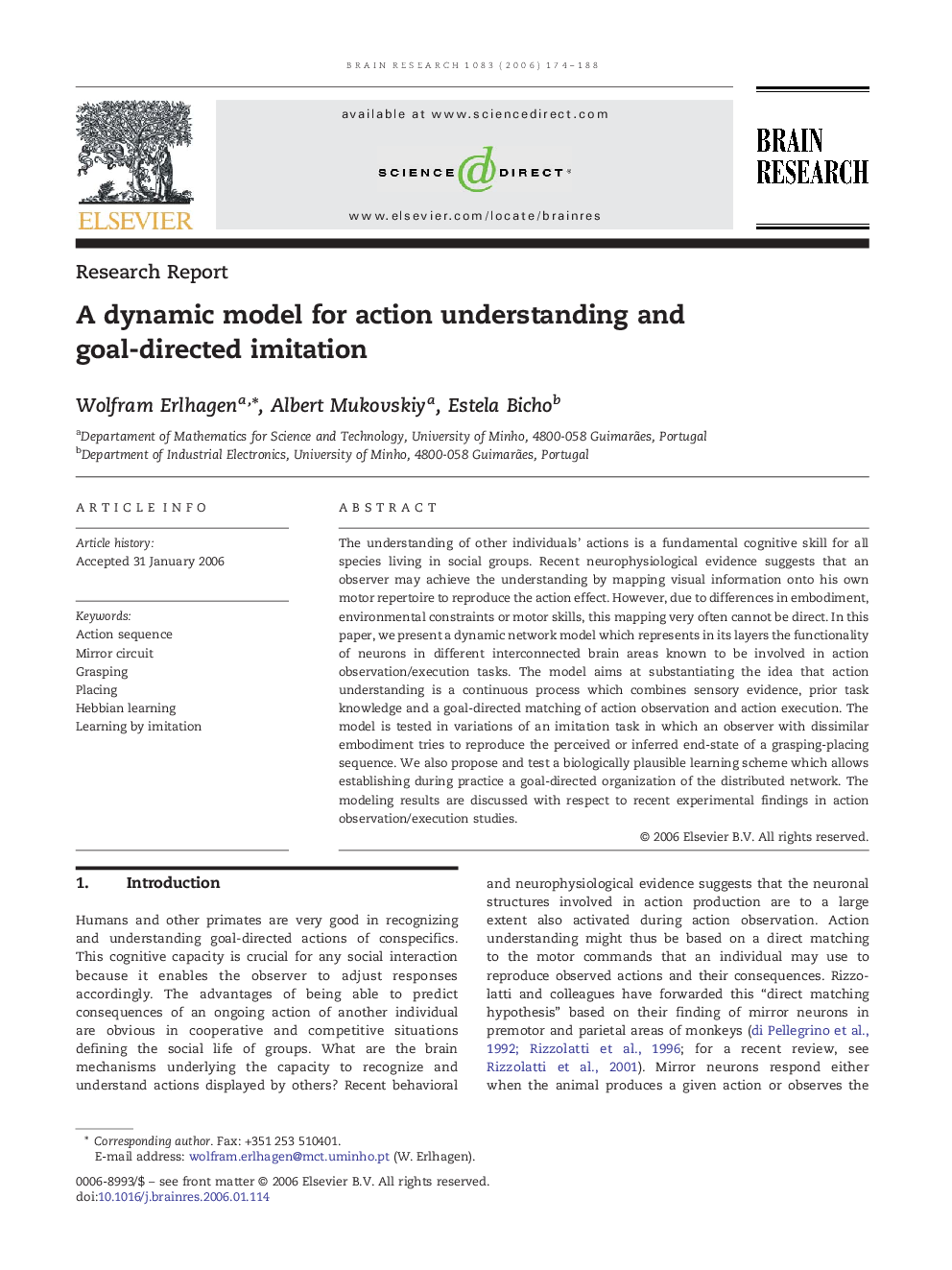| Article ID | Journal | Published Year | Pages | File Type |
|---|---|---|---|---|
| 4333117 | Brain Research | 2006 | 15 Pages |
The understanding of other individuals' actions is a fundamental cognitive skill for all species living in social groups. Recent neurophysiological evidence suggests that an observer may achieve the understanding by mapping visual information onto his own motor repertoire to reproduce the action effect. However, due to differences in embodiment, environmental constraints or motor skills, this mapping very often cannot be direct. In this paper, we present a dynamic network model which represents in its layers the functionality of neurons in different interconnected brain areas known to be involved in action observation/execution tasks. The model aims at substantiating the idea that action understanding is a continuous process which combines sensory evidence, prior task knowledge and a goal-directed matching of action observation and action execution. The model is tested in variations of an imitation task in which an observer with dissimilar embodiment tries to reproduce the perceived or inferred end-state of a grasping-placing sequence. We also propose and test a biologically plausible learning scheme which allows establishing during practice a goal-directed organization of the distributed network. The modeling results are discussed with respect to recent experimental findings in action observation/execution studies.
